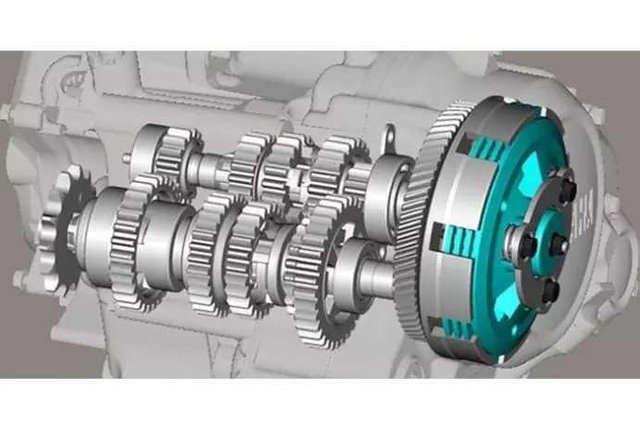Many Failed to Understand .. This Function Actually Slipper Clutch in Sport Bike
There are still many who fail to understand the latest technology that began to be embedded in small-capacity motors.
Examples such as Slipper Clutch features are pinned on the All New YamahaR15 and the latest 250 cc sports Kawasaki New Ninja 250.
"Slipper clutch helps when engine brake occurs, so the beat is smoother if compared without slipper clutch," said Eddy Yulianto, Chief Mechanic of Kawasaki Super Success Fatmawati when found GridOto.com.
Engine brake itself is usually done to reduce the speed suddenly or suddenly.
"Engine brake is still working, it's just not too stomping as usual when abruptly lowered the teeth," said the man who lives in South Tangerang this.
Other effects, because engine brake it so much smoother, then the age of gear, chain and also the tires become more durable, because the beat is reduced.
Also Assist & Slipper Clutch can also minimize the potential wheel lock due to engine brake.
Not only that, Assist & Slipper Clutch also makes the clutch so lighter.
"Try just bandingin press clutch motor that already Assist & Slipper Clutch the same that has not, surely much lighter already used Assist & Slipper Clutch," said Eddy.
This is because the system on the clutch is different from the standard motor.
"Because if it's Assist & Slipper Clutch that use per clutch only three, so it's lighter," said Eddy.
Hence with the assist on the clutch, when faced with congestion also hand does not easily tired, because the clutch handle is much lighter.
Basically, the clutch house construction is divided into 3 main parts, the clutch outer or large part where the secondary gear is attached, then there is the inner or clutch center that has the gear plate holders and the last plate pressure plate attached per clutch.
When the clutch handle is not pressed, the secondary tooth rotates due to rotation of the primary teeth simultaneously as the plank and the friction plate are pressed per, so the inner also spins and drives the ratio.
While the clutch handle is pulled, the pressure plate will expand to make the impulse to the plank and the friction plate decreases, so that it is free, then the round of the crutch is not passed on to the ratio, so it can move the teeth.
Well on a motor that uses Assist & Slipper Clutch, the difference is, inner or clutch center split into 2, the model stacks with a sloping groove that can shift, that's where the key. The sloping groove is 2, which tilts inward and outward.
Because the inside can be shifted, hence from the hole per clutch shape oval.
When acceleration, ie when the engine speed is faster than the wheel, then clucth outer will rotate and push clucth center (clutch boss) which also place per stick.
Because the groove tilted in, then the movement automatically makes the push to the campas getting bigger, the effect of the bite so the stronger and the clutch lever becomes more lightly.
While when the deceleration, the rear tire round is firmer than the engine, then the opposite happens.
In this engine brake position, the rotation of the wheel passing ratio will push the boss clutch stronger so that the sliding gear is pushed out.
Furthermore, pressure plate open and cause pressure between plank and plate decrease, result of engine brake so minimal. Like when the clutch handle is pulled.

Hi LOVE YOUR POST MAN!!! LIKE MY POST TOO!!!!! HERE IS THE LINK: https://steemit.com/bots/@abusereports/last-minute-upvote-list-2018-05-02